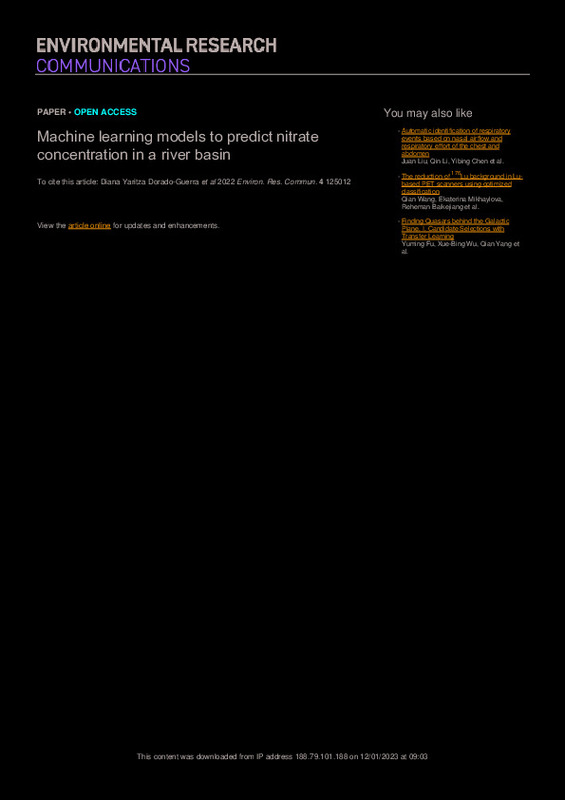|
Resumen:
|
[EN] Aquifer-stream interactions affect the water quality in Mediterranean areas; therefore, the coupling of
surface water and groundwater models is generally used to solve water-planning and pollution
problems in river ...[+]
[EN] Aquifer-stream interactions affect the water quality in Mediterranean areas; therefore, the coupling of
surface water and groundwater models is generally used to solve water-planning and pollution
problems in river basins. However, their use is limited because model inputs and outputs are not
spatially and temporally linked, and the data update and fitting are laborious tasks. Machine learning
models have shown great potential in water quality simulation, as they can identify the statistical
relationship between input and output data without the explicit requirement of knowing the physical
processes. This allows the ecological, hydrological, and environmental variables that influence water
quality to be analysed with a holistic approach. In this research, feature selection (FS) methods and
algorithms of artificial intelligence¿random forest (RF) and eXtreme Gradient Boosting (XGBoost)
trees¿are used to simulate nitrate concentration and determine the main drivers related to nitrate
pollution in Mediterranean streams. The developed models included 19 inputs and sampling of nitrate
concentration in 159 surface water quality-gauging stations as explanatory variables. The models were
trained on 70 percent data, with 30 percent used to validate the predictions. Results showed that the
combination of FS method with local knowledge about the dataset is the best option to improve the
model¿s performance, while RF and XGBoost simulate the nitrate concentration with high
performance (r=0.93 and r=0.92, respectively). The final ranking, based on the relative importance
of the variables in the RF and XGBoost models, showed that, regarding nitrogen and phosphorus
concentration, the location explained 87 percent of the nitrate variability. RF and XGBoost predicted
nitrate concentration in surface water with high accuracy without using conditions or parameters of
entry and enabled the observation of different relationships between drivers. Thus, it is possible to
identify and delimit zones with a spatial risk of pollution and approaches to implementing solutions
[-]
|
|
Agradecimientos:
|
We appreciate the help provided by the Júcar River Basin District Authority (CHJ), who gathered field data. The
first author's research is partially funded by a PhD scholarship from the food research stream of the ...[+]
We appreciate the help provided by the Júcar River Basin District Authority (CHJ), who gathered field data. The
first author's research is partially funded by a PhD scholarship from the food research stream of the program
`Colombia Científica Pasaporte a la Ciencia, granted by the Colombian Institute for Educational Technical
Studies Abroad (Instituto Colombiano de Crédito Educativo y Estudios Técnicos en el Exterior, ICETEX). The
authors thank the Spanish Research Agency (AEI) for the financial support to RESPHIRA project (PID2019-
106322RB-100)/AEI/10.13039/501100011033.
[-]
|









